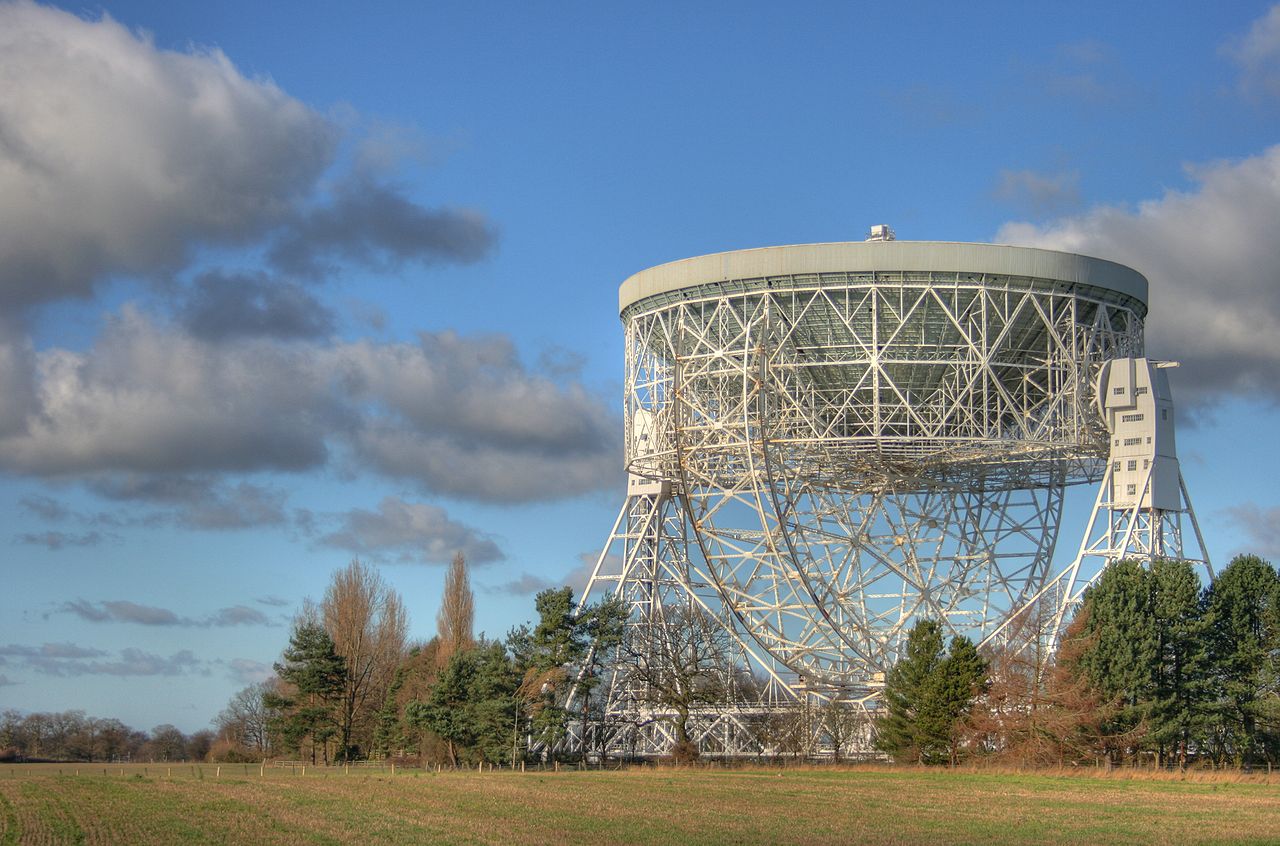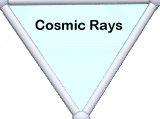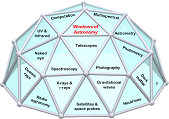Windows of Astronomy |
||
Radio astronomyKarl Jansky was the first to detect galactic radio waves and realise what they were when he was working for Bell Labs in 1932. He didn’t win a Nobel Prize. Penzias and Wilson were the first to detect the cosmic microwave background in 1964 while working for Bell Labs. They were awarded a share of the Nobel Prize in 1978. Martin Ryle and Anthony Hewish won the Nobel Prize in 1974, Ryle for developing the ‘aperture synthesis’ technique that can produce outstanding resolution and Hewish for the discovery of pulsars. Hulse and Taylor won the Nobel Prize in 1993 for their work with pulsars confirming Einstein’s prediction of gravitational waves; Mather and Smoot received the Nobel Prize in 2006 for their work in measuring and interpreting the anisotropy of the microwave background. These prizes suggest quite rightly the power of radio astronomy to tell us about the Universe at large. A 75-metre diameter steerable radio telescope dish rising above the surrounding landscape is a truly impressive sight. Through its detection of the 21-cm radio emission from neutral hydrogen atoms, the distribution of hydrogen is mapped in the Milky Way. Indeed, the motion of the hydrogen around the galactic centre can be determined from the Doppler shift of this emission. The detail that can be seen is determined by the number of wavelengths across the diameter of the dish, which is just under 500. This is much, much less than even the smallest telescope achieves at optical wavelengths. The development of Ryle’s synthetic aperture technique allows signals from antennae even hundreds of kilometres apart to be combined as if they were coming from one gigantic dish. The resolution of radio telescope ‘images’ can be now as good as that from optical telescopes, if not generally better. It was also Ryle who showed that distant galaxies seen earlier in the evolution of the visible universe were closer together than galaxies typically are now, providing hard to refute evidence for the expanding universe.
|
The Lovell radio telescope courtesy Mike Peel; Jodrell Bank Centre for Astrophysics, University of Manchester. |
|
Large arrays such as ALMA in Chile, LOFAR in Europe, and the up-coming SKA in southern Africa and Australia, to name three, allow a huge range of mapping options for specific molecules and radicals in supernovae remnants, star-forming nebulae and galaxies.
|
About half of the Alma Observatory radio array in the Atacama Desert at 5 km altitude. Image M. Struik (CERN)/ALMA (ESO/NAOJ/NRAO) |
|



